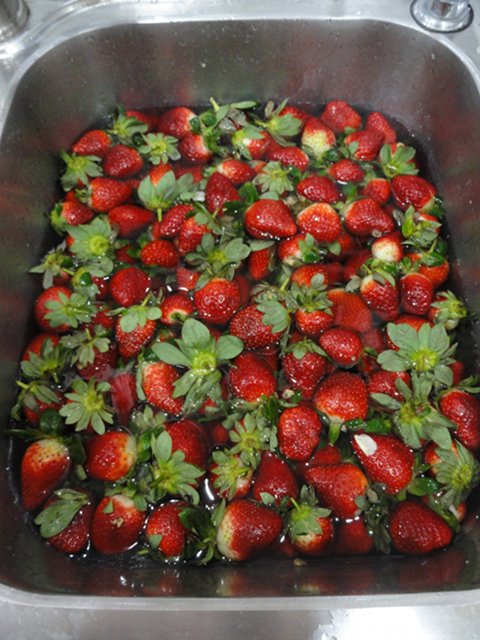All foods that are grown have a particular season when they're naturally at their best. The seasons in the southern hemisphere are the opposite to those in the northern. The closer you live to the equator, the less the seasons play a role in what can be grown. Food grown in season will be fresher and cheaper, and it will probably have been grown in more natural conditions - not in a glasshouse or hydroponically. The problem we have today is that unless you grow your own, you don't know what is in season. We've forgotten our seasons, and in general, all thoughts of how the seasons work to produce food has been lost to many of us.
This is one of the areas we need to reskill ourselves. Homemakers in the past would have commonly known this information, we should all learn it as part of our move towards being more self-reliant and aware.
Seasonal food chart USA - fruit and vegetables
I think the question most often asked while Hanno and I were on our book tour was "Is this only for retired people? Surely you couldn't do what you do if you worked for a living." I'm sure all of you living a more simple life will know that organisation is a big part of making it work. With menu planning, stockpiling, routines, lists and working with the seasons, you can do most of what you want to do, even if you're working outside the home as well.
Part of my yearly organisation is to make jam. We have jam on toast and scones andI use it in cooking sometimes. If I want good quality jam, made with no artificial additives, I have to make it myself. I know I can make enough jam for almost a year in half a day but because we like two jams - peach and strawberry, and both those fruits are available in abundance and cheaply in different seasons, I have to organise myself to make two separate batches, usually six months apart. Those two half day jam sessions give us good quality jam for the entire year, with enough to give as gifts as well.
In Australia and New Zealand too probably, it's now strawberry season. It's time to make jam! Strawberry jam is one of the easiest jams to make and the taste is much more intense than any commercial jam you will buy. There is a recipe here. I would add pectin to it. Here is an American recipe for strawberry jam.
You need to understand the role of pectin in jam making too. There is a good explanation here. Pectin is the natural fibre that helps jams set and become spreadable but not too runny. Often jams made without added pectin will be too runny to stay on your toast. You can buy pectin to add to jam, and there is no reason why you shouldn't use it. Fowlers Vacola have a pectin pouch you can buy at the supermarket in Australia. I have no doubt powdered pectin available in other countries too. Jam sugar is available too, this is sugar with pectin added to it. I prefer not to use jam sugar because I like to regulate the amount of pectin I use. I like jam that isn't solid but isn't runny either. When you buy pectin, check that it doesn't contain dextrose or any other additive you don't want.
In Australia we use the English method of jam making and preserving. Those of you in the USA and probably Canada too, use a different method. Please be guided by what you think it the correct way.
Here, we use recycled jars and most of us don't process our jams in a water bath. We believe that hot jam going into sterilised jars that are sealed immediately and properly, is enough to keep the jam well in the cupboard. It has been done this way for hundreds of years. Jam has a high sugar content - sugar is a preservative. If you follow the guidelines and sterilise your jars and lids properly, that delicious jam you make can be stored in the cupboard for months.
If you've never made jam before, try it. Start with a simple jam like strawberry, and I'm sure you'll be convinced by the taste alone, that it's something you should do in strawberry season every year.





